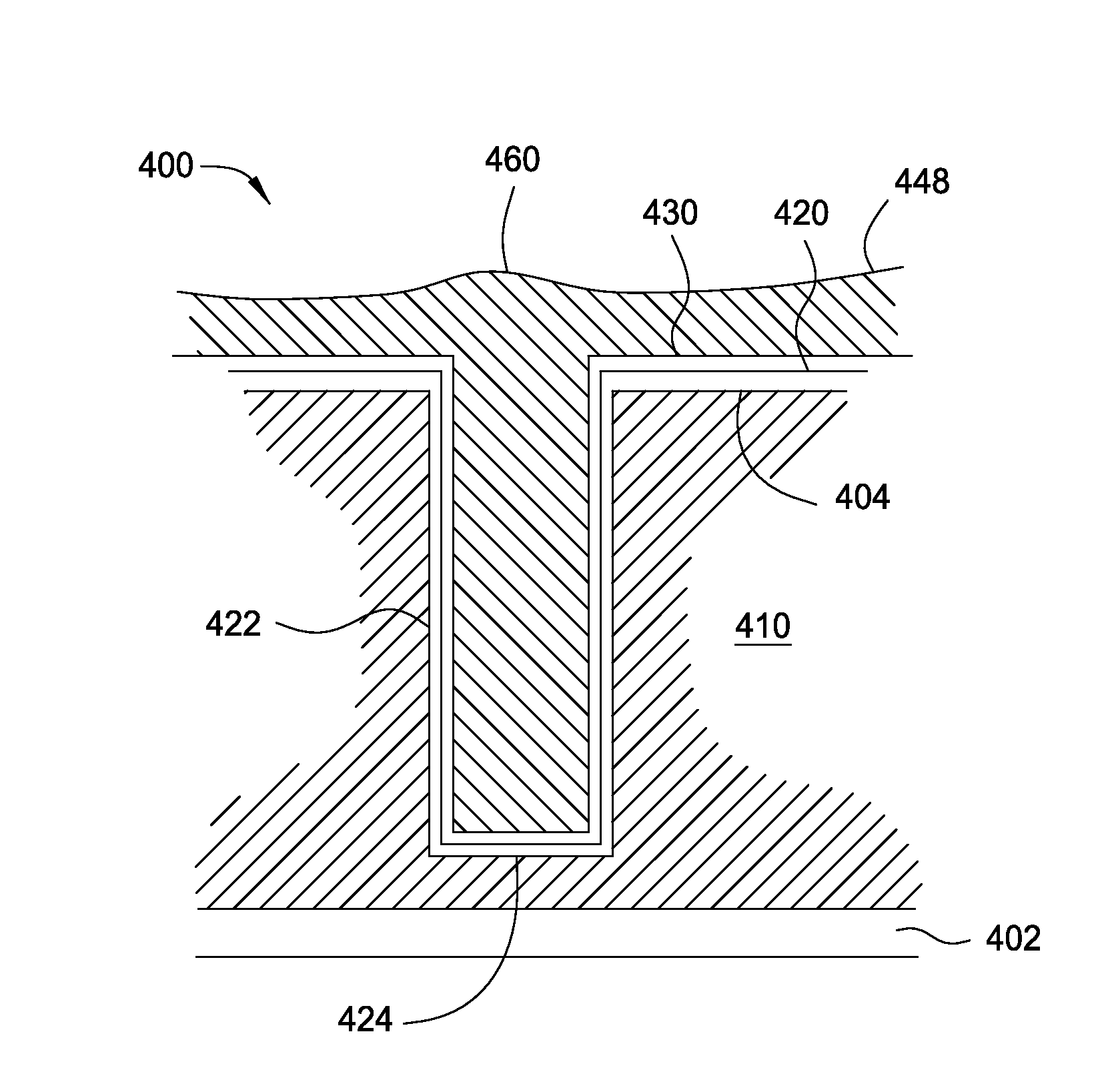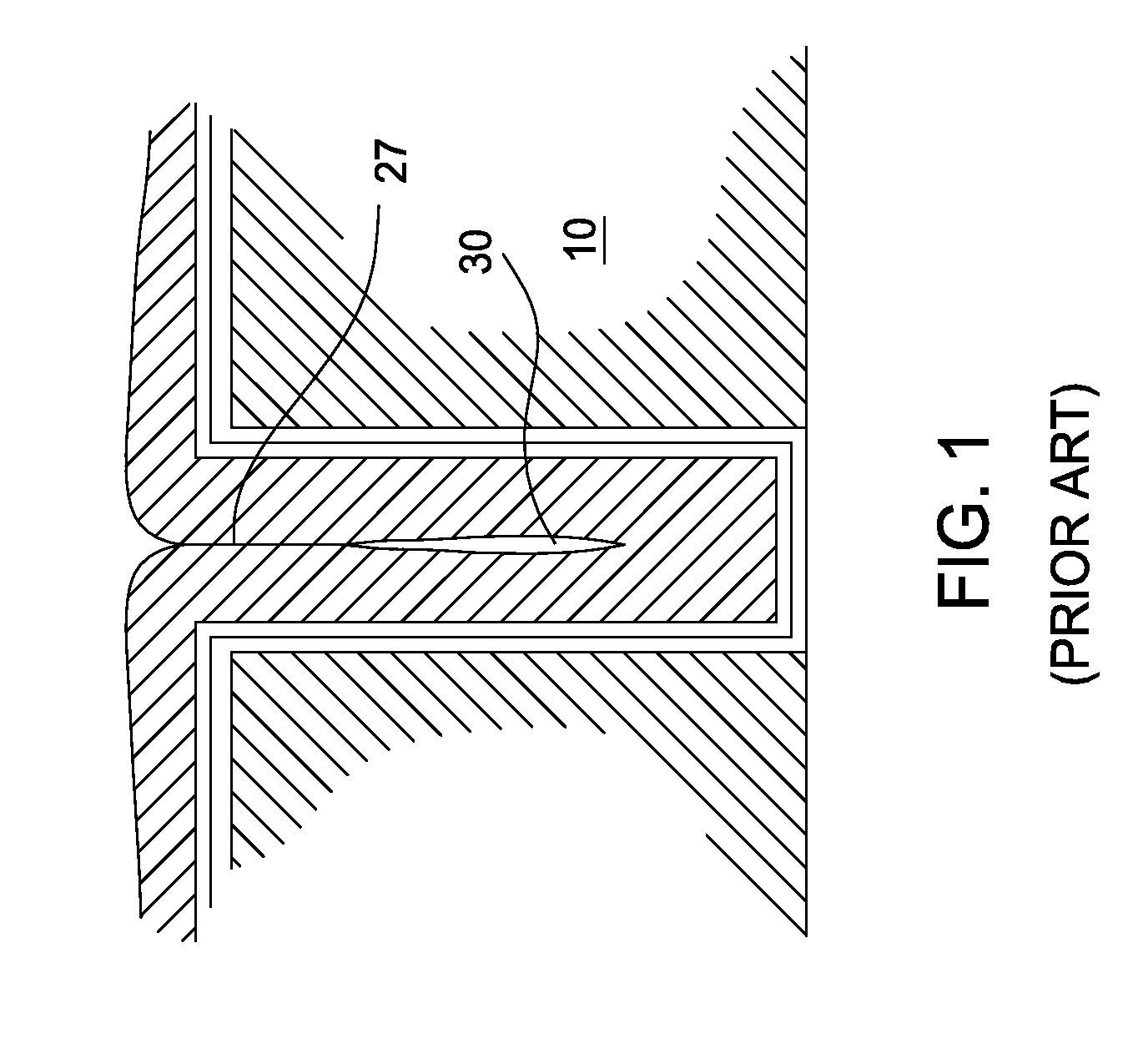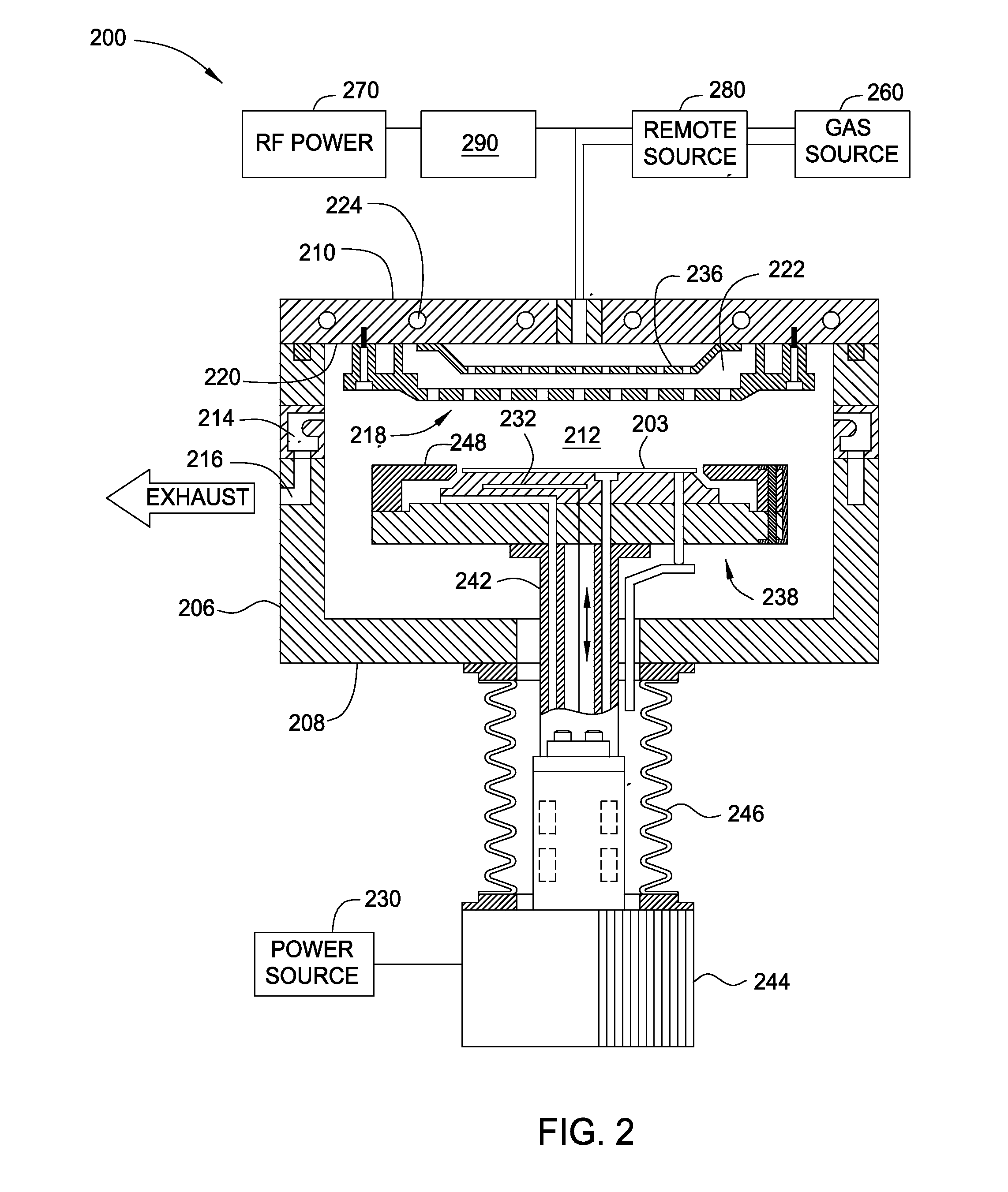Tungsten deposition with tungsten hexafluoride (WF6) etchback
a technology of tungsten hexafluoride and etchback, which is applied in the direction of coating, chemical vapor deposition coating, metallic material coating process, etc., can solve the problems of increased processing capacity, improper operation, and increased difficulty in this process
- Summary
- Abstract
- Description
- Claims
- Application Information
AI Technical Summary
Benefits of technology
Problems solved by technology
Method used
Image
Examples
Embodiment Construction
[0018]Implementations described herein generally relate to the processing of substrates, and more particularly relate to methods for forming tungsten materials on substrates using vapor deposition processes.
[0019]Tungsten (W) has been used at contact level in logic application for about two decades. In recent advanced CMOS devices, new technology such as metal gate and FinFET emerge, which leads to a new application for tungsten as metal gate fill for both PMOS and NMOS devices. In 3D NAND devices, tungsten is also used for metal gate fill. The requirements for tungsten fill become more and more challenging. For contact, the overhang becomes more challenging as the dimensions of contacts are getting smaller and typically leaves a big seam after tungsten conformal fill. Furthermore, the seam will be exposed to slurry during WCMP, which causes integration issues. For metal gate trench in both advanced CMOS and 3D NAND, traditional tungsten conformal growth inevitably leaves a seam in ...
PUM
| Property | Measurement | Unit |
|---|---|---|
| thickness | aaaaa | aaaaa |
| thickness | aaaaa | aaaaa |
| thickness | aaaaa | aaaaa |
Abstract
Description
Claims
Application Information
 Login to View More
Login to View More - R&D
- Intellectual Property
- Life Sciences
- Materials
- Tech Scout
- Unparalleled Data Quality
- Higher Quality Content
- 60% Fewer Hallucinations
Browse by: Latest US Patents, China's latest patents, Technical Efficacy Thesaurus, Application Domain, Technology Topic, Popular Technical Reports.
© 2025 PatSnap. All rights reserved.Legal|Privacy policy|Modern Slavery Act Transparency Statement|Sitemap|About US| Contact US: help@patsnap.com



